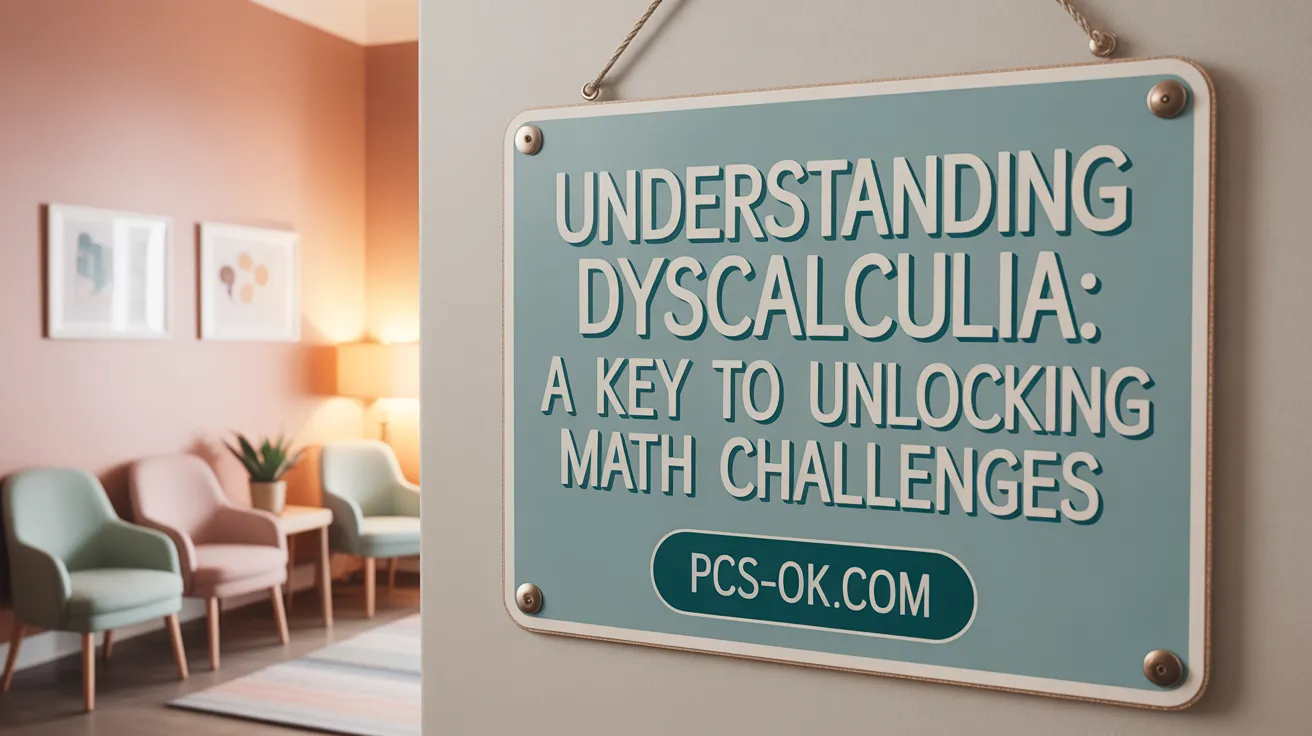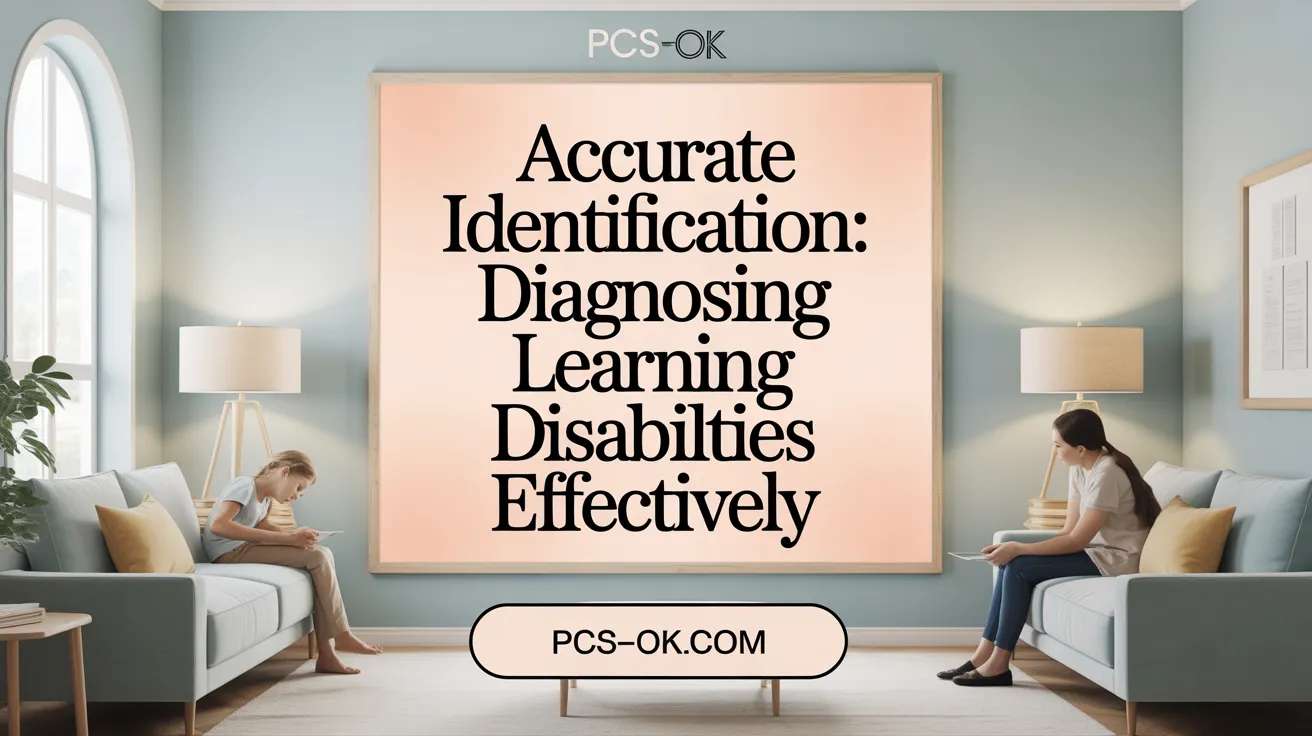Dyscalculia: The Lesser-Known Learning Disorder
Introducing Dyscalculia: More Than Just Math Struggles
Dyscalculia is a lesser-known learning disorder that affects an individual’s ability to comprehend and work with numbers in everyday tasks and academic settings. While often overshadowed by conditions like dyslexia, dyscalculia impacts roughly 4 to 7 percent of students worldwide, presenting significant challenges in math-related learning and daily functioning. This article offers a comprehensive exploration of dyscalculia—its definition, symptoms, neurological roots, history, and strategies for diagnosis and management—to shed light on this fascinating yet under-recognized disorder.
Defining Dyscalculia: The Specific Learning Disorder Affecting Numeracy

What is dyscalculia and how is it defined?
Dyscalculia is a distinct learning disorder that primarily impacts an individual’s ability to understand and use numbers effectively. It involves difficulty grasping fundamental mathematical concepts, performing calculations, and solving math problems, despite having adequate intelligence and access to appropriate education.
This condition is rooted in differences in brain structure and function, especially in areas responsible for numerical processing such as the parietal lobes. It is considered to be developmental and inborn, meaning individuals are born with it, although symptoms may become most evident during childhood when formal math education begins.
Children with dyscalculia often struggle with recognizing numbers, memorizing basic math facts, and understanding the relationships between numbers, such as size or order. Adults may face challenges with everyday tasks involving money, time management, and spatial reasoning. Diagnosis relies on behavioral assessments, standardized math tests, and a comprehensive review of the individual’s educational and developmental history, since there are no quick biological tests for it.
In essence, dyscalculia affects how the brain processes numerical information, making even simple math tasks seem daunting. Importantly, this disorder does not reflect a person’s overall intelligence; many individuals with dyscalculia perform well in other academic areas and possess average or above-average IQs.
By understanding dyscalculia as a specific impairment in numerical understanding, educators and parents can better recognize its signs early and facilitate appropriate learning strategies and accommodations, helping individuals develop their math skills and succeed in daily life.
Recognizing Dyscalculia: Symptomatology Across the Lifespan

What are the common symptoms and signs of dyscalculia?
Dyscalculia manifests differently across age groups, but several core signs are consistently observed. In young children, early indicators include difficulty recognizing numbers, trouble with counting procedures, and challenges in understanding basic math concepts such as bigger versus smaller, and simple patterns.
Children may also struggle with connecting symbols like numerals to quantities or objects, and often rely heavily on visual aids, including fingers, to count or solve basic problems. As they grow older, students might find it difficult to memorize multiplication facts, understand place value, or interpret word problems. They may need extra time to complete math assignments and often experience anxiety or frustration related to math tasks.
For teenagers and adults, signs become more related to everyday activities. These individuals often have trouble performing mental calculations, estimating durations, managing money—including budgeting and currency exchanges—and understanding data presented in graphs or charts. They might also make errors in tasks that require understanding directions involving distances or speed.
Emotional responses are also common, with feelings of frustration, anxiety, or avoidance behaviors surfacing, especially during testing or real-world application of math skills.
Overall, while dyscalculia mainly impairs numerical processing, it does not affect a person’s general intelligence. Recognizing these signs early can lead to targeted support, improving academic performance and daily life management.
The Neurological Underpinnings of Dyscalculia: Brain Structure and Function

What causes dyscalculia and what is its neurological basis?
Dyscalculia stems from atypical development and functioning of specific brain regions that are critical for processing numbers and mathematical concepts. The most prominent area involved is the intraparietal sulcus (IPS), located within the parietal lobe, which plays a vital role in understanding and manipulating numerical information. Structural differences in the brain, such as reduced gray matter volume and disrupted white matter connectivity, have been observed in individuals with dyscalculia. These abnormalities occur in key regions including the IPS, fusiform gyrus, and parts of the frontal lobe.
Neuroimaging studies have provided valuable insights, showing that people with dyscalculia often exhibit decreased activation in these critical areas during numerical tasks. This reduced activity indicates difficulties in neural circuits responsible for magnitude judgment, calculation, and the general sense of number. Less efficient neural modulation further impairs the brain’s ability to interpret and process quantities, leading to the common struggles with basic and complex math skills.
Genetic influences are also thought to contribute to these brain differences. Dyscalculia frequently runs in families, suggesting a hereditary component. Though most cases are based on developmental differences rather than injuries, genetic factors can influence brain structure and connectivity early in life.
Overall, the neurobiological basis of dyscalculia involves complex abnormalities at both the microstructural level and in neural connectivity within a frontoparietal network. This network is essential for numerical cognition, and its atypical development explains many of the common difficulties faced by individuals with the disorder.
For more information, search using the query “Neurological basis and brain imaging studies of dyscalculia.” This research area continues to evolve, enhancing understanding of how brain differences underpin mathematical learning challenges.
Diagnosing Dyscalculia: Challenges and Procedures

How is dyscalculia diagnosed?
Diagnosing dyscalculia involves a thorough evaluation performed by a trained psychologist or educational specialist. This process begins with collecting a detailed developmental and educational history to understand the individual’s early math skills and current challenges.
The core of diagnosis relies on standardized psychometric assessments tailored for different age groups. Tools such as the Children’s Diagnostic and Assessment of Mathematical Skills (CODY-M), the Mathematische Bezugsdiagnose für Lehrkräfte (MBK), the Diagnostic battery for Dyscalculia (BADYS), or the Dimentional Evaluation of Mathematical Abilities Test (DEMAT) are commonly used. These assessments measure specific mathematical skills, including number sense, calculation, and problem-solving, and compare results to normative data.
A crucial aspect is ensuring that mathematical difficulties are persistent and significant, typically evidenced by scores below the 16th percentile. The evaluation also rules out other potential causes such as intellectual disabilities, which are characterized by an IQ below 70, sensory issues like vision or hearing impairments, and environmental factors like inadequate schooling.
Additionally, clinicians consider other conditions that might coexist, including ADHD, anxiety, or dyslexia, which can influence math performance. Observation of developmental milestones and current functional abilities provides further context.
The diagnosis is confirmed if the difficulties have persisted for at least six months despite appropriate educational interventions and accommodations. This comprehensive approach ensures that the diagnosis of dyscalculia is accurate and can guide targeted support and intervention strategies.
More info
Further details on diagnostic methods for dyscalculia in children and adults can be explored through specialized articles, research papers, or consultation with educational and clinical psychologists.
Historical Perspective: The Evolution of Dyscalculia Recognition
How has the recognition and understanding of dyscalculia evolved historically?
The awareness of dyscalculia and its distinction from general intellectual disabilities has developed significantly over the past century. The earliest neurological observations related to calculation difficulties date back to 1919, when Salomon Henschen described acalculia—a form of mathematics impairment—highlighting that such challenges could be separate from overall intelligence issues.
In the 1940s, the term ‘dyscalculia’ was first introduced, marking a pivotal step in recognizing mathematics-specific learning difficulties as a distinct condition. This terminology gained traction in the 1970s, largely through the work of experts like Ladislav Kosc, who emphasized that some individuals experience persistent difficulties with math despite normal intelligence levels.
Throughout the late 20th and early 21st centuries, research confirmed that dyscalculia has biological foundations. Neuroimaging studies, such as MRI scans, revealed structural and functional differences in the brains of individuals with dyscalculia, notably in areas involved in numerical processing like the parietal lobes.
Conceptually, the understanding has shifted from viewing learning disabilities primarily through an IQ-discrepancy lens to recognizing that dyscalculia involves specific neurodevelopmental factors. It is now recognized as a lifelong condition characterized by difficulties with basic number sense, memorization, and problem-solving, regardless of instruction quality.
Classification systems like the DSM-5 and ICD-11 have incorporated dyscalculia as a specific learning disorder, helping to standardize diagnosis and facilitate appropriate interventions. Despite these advances, awareness and recognition vary worldwide, with some regions still lacking widespread understanding.
Advocacy and ongoing research continue to improve awareness, leading to better identification, targeted support in educational settings, and a deeper appreciation of its neurobiological roots. These efforts contribute to a more nuanced and effective approach to helping individuals with dyscalculia thrive.
| Time Period | Milestone | Impact |
|---|---|---|
| 1919 | Henschen describes acalculia | First recognition that calculation difficulties can be distinct from general intelligence |
| 1940s | Term ‘dyscalculia’ coined | Establishment of the condition as a recognized disorder |
| 1970s | Research by Kosc | Broader recognition and understanding of persistent math difficulties |
| 2000s | Neuroimaging studies | Confirmation of biological basis involving brain structure differences |
| Present | Integration into DSM-5 and ICD-11 | Standardized diagnosis and support systems |
Understanding the history of dyscalculia highlights how scientific knowledge and diagnostic practices have evolved, leading to more precise identification and better support for individuals affected by this condition.
Dyscalculia’s Impact: Academic, Emotional, and Everyday Challenges
What impact does dyscalculia have on individuals’ learning and daily life?
Dyscalculia profoundly affects how individuals understand and work with numbers and mathematical concepts. In school, students with this condition often struggle with basic skills such as recognizing numbers, memorizing math facts, and solving math problems. These difficulties can lead to poor performance in mathematics classes and frustration, which may affect their motivation and confidence in learning.
But the effects extend well beyond school environments. Daily activities such as managing money, telling time, reading maps, estimating distances, or calculating expenses become challenging. These practical hurdles can hinder independence and increase reliance on others.
Psychologically, individuals with dyscalculia may experience low self-esteem, anxiety, and social withdrawal, especially if their difficulties are misunderstood or unaddressed. Feelings of frustration and failure can develop early and persist into adulthood, impacting career opportunities and overall quality of life.
Early intervention is crucial. With tailored support—including one-on-one instruction, multisensory learning strategies, and assistive technology—many individuals can better manage their challenges. This proactive approach helps reduce the emotional toll and improves their ability to succeed academically and perform everyday tasks.
In essence, dyscalculia influences more than just academic achievement. It shapes emotional well-being and everyday functioning, highlighting the importance of awareness, early diagnosis, and appropriate support systems to enable individuals to thrive.
Identification and Assessment Strategies for Dyscalculia
What strategies are effective for identifying and managing dyscalculia?
Detecting dyscalculia early is essential for providing timely support and intervention. Schools often begin with screening procedures to identify students who may struggle with math. These screenings usually involve simple, quick assessments that measure basic number sense, counting skills, and understanding of numerical concepts.
Once a student shows signs of difficulty, a multifaceted assessment approach is recommended. This comprehensive evaluation includes standardized psychometric tests, reviews of academic records, teacher observations, and clinical examinations that examine cognitive and neurological factors. Collecting a detailed history, including developmental milestones and psychosocial factors, helps differentiate dyscalculia from other learning or emotional issues.
It is also vital to rule out co-occurring disorders such as ADHD, dyslexia, or sensory processing issues, which can influence mathematical learning. This holistic assessment ensures that support strategies are tailored accurately to individual needs.
The role of educators and specialists
Educators play a crucial role in early identification by noting persistent difficulties in math tasks, such as problems recognizing numbers, memorizing math facts, or understanding spatial relationships. They can collaborate with specialists—including educational psychologists, speech-language pathologists, and occupational therapists—to conduct thorough assessments.
Specialists utilize a variety of tools, such as tasks measuring symbolic and non-symbolic number processing, subitising ability, and working memory capacity. The goal is to map out specific strength and weakness areas to inform targeted interventions.
Structured teaching methods that incorporate multisensory, hands-on activities, visual supports, and technology are often used to teach math concepts more effectively. Adjustments such as extended time, use of calculators, and organized learning environments help accommodate individual learning needs.
Importance of a connected approach
Accurate diagnosis and effective management rely on collaborative efforts among teachers, specialists, parents, and the students themselves. Ongoing monitoring is essential to adjust strategies and ensure progress.
For further information, searching topics like “Identification and assessment of dyscalculia in educational settings” can provide insights into current best practices and resources available to educators and families. This comprehensive approach facilitates better understanding and support for students facing mathematical learning challenges.
Managing Dyscalculia: Interventions and Support Across Ages
How does early intervention benefit children with dyscalculia?
Early diagnosis and targeted support can significantly improve outcomes for children with dyscalculia. When identified early, children can receive specialized instruction tailored to their specific difficulties, such as multisensory learning approaches that engage different parts of the brain responsible for math understanding.
These interventions help children develop better number sense, improve calculation skills, and reduce math anxiety. Early support also advances their confidence and motivation, making math less intimidating and more accessible.
What kinds of educational accommodations support students with dyscalculia?
In school settings, accommodations are crucial. Teachers can implement structured, sequential instruction that breaks down complex math tasks into manageable steps. Using visual aids, manipulatives, and graphic organizers helps students grasp abstract concepts.
Additionally, offering extended time for math assessments, providing calculators or computers for calculations, and allowing alternative ways to demonstrate understanding are common accommodations.
How can technology and compensatory tools assist adults and children?
Technology plays an important role in managing dyscalculia. Software applications and apps can help individuals practice math skills in engaging ways, providing immediate feedback and adaptive difficulty levels.
For adults, tools such as calculator apps, financial management software, and digital organizers help compensate for difficulties in everyday tasks like budgeting, reading maps, or managing schedules.
How do interventions address emotional and motivational challenges?
Math anxiety and low confidence are common among those with dyscalculia. Support strategies include creating a positive learning environment, emphasizing effort over accuracy, and celebrating small successes.
Counseling or peer support groups can also be beneficial. Building resilience and fostering a growth mindset encourages individuals to persist despite challenges, helping them develop a more positive attitude toward math.
Distinguishing Dyscalculia from Other Learning Disabilities
How can dyscalculia be distinguished from other learning disabilities?
Dyscalculia is a specific condition that uniquely affects a person’s ability to understand, process, and manipulate numerical information and mathematical concepts. Unlike broader cognitive issues, individuals with dyscalculia typically have normal or above-average intelligence and can perform well in areas unrelated to math, such as reading or language skills.
The hallmark of dyscalculia is persistent difficulty with core numerical skills. These include understanding number sense, estimation, basic calculations, and recognizing the relationships between different numbers, like patterns or sequential order. People with this disorder may rely heavily on strategies like finger counting or visual aids and often struggle with tasks that seem simple to others, such as telling time or managing money.
In contrast, conditions like dyslexia primarily impact reading and language comprehension, while ADHD affects attention and impulse control. These conditions do not usually cause the specific mathematical deficits seen in dyscalculia.
Assessment plays an essential role in distinguishing dyscalculia. Tests typically reveal significant struggles with foundational math skills and numerical reasoning, which are less pronounced in other disabilities. Recognizing these patterns helps differentiate dyscalculia from broader learning challenges.
Overall, the key feature that sets dyscalculia apart is its lifelong, precise impairment in understanding numbers and quantity concepts, which remains pronounced despite appropriate instruction and intelligence. This specificity is central to accurate diagnosis and targeted intervention.
Prevalence and Co-occurrence: Dyscalculia in the Learning Disability Spectrum
Estimated Rates Among Students
Dyscalculia affects approximately 4% to 7% of students, making it comparable to other learning disabilities such as dyslexia. This means that in a typical classroom, there might be one or two students with this condition, often going unnoticed without proper screening.
Common Co-occurrence with Other Disorders
Many individuals with dyscalculia also experience other conditions such as ADHD, dyslexia, dysgraphia, sensory processing disorders, and autism spectrum disorder. The overlap among these conditions suggests that math difficulties can be part of broader neurodevelopmental profiles, complicating diagnosis and requiring comprehensive support strategies.
Gender Distribution
Research indicates that the prevalence of dyscalculia is similar across genders, meaning boys and girls are equally likely to be affected. This equal distribution emphasizes the need for awareness and screening in all student populations regardless of gender.
Implications for Diagnosis and Support
Early identification through school-wide screening and assessments helps children access targeted resources, such as specialized learning programs and accommodations. For adults, recognition often involves managing the condition through strategies like using technological aids. Understanding the widespread nature of dyscalculia and its common co-occurrences highlights the importance of tailored educational approaches and supportive policies.
| Aspect | Details | Additional Notes |
|---|---|---|
| Prevalence | 4-7% of students | Similar to dyslexia |
| Co-occurring Conditions | ADHD, dyslexia, autism, etc. | Often present with multiple neurodiverse traits |
| Gender | Equal across boys and girls | No significant gender difference |
| Support Strategies | Screening, assessment, interventions | Focus on early diagnosis and individualized learning plans |
Future Directions: Research and Awareness in Dyscalculia

Advances in neuroimaging and genetics
Recent research has expanded our understanding of dyscalculia through neuroimaging technologies like MRI and functional imaging, revealing that individuals with this disorder often process numerical information differently. Studies show variations in the structure and activity of brain areas involved in math, such as the parietal lobes, which are smaller or less active in some people with the condition. Additionally, genetics play a role, as family studies indicate a hereditary component, although specific gene links are still being researched.
Educational and diagnostic innovations
Innovations in education include developing specialized, multisensory instructional strategies tailored to individual needs. Early screening programs in schools help identify children at risk, allowing timely intervention. Diagnostic tools now incorporate comprehensive assessments of number sense, symbolic processing, and working memory, rather than relying on a single test. These advancements aim to improve accuracy and ensure that students with dyscalculia receive appropriate support.
Growing advocacy and legal protections
Awareness of dyscalculia is growing, with advocacy groups pushing for broader recognition of learning disabilities in policy and education. Laws such as the Individuals with Disabilities Education Act (IDEA) and protections under the Americans with Disabilities Act (ADA) mandate accommodations for students and adults with learning challenges. This increased legal support helps ensure access to resources, individualized education plans, and workplace accommodations, fostering greater inclusion.
Remaining challenges and potential solutions
Despite progress, challenges remain, including limited awareness among educators and misdiagnosis. Many individuals remain undiagnosed or receive inadequate support. Future efforts focus on training teachers, improving diagnostic methods, and integrating technology such as apps and software for skill development. Continued research into the neurobiological basis of dyscalculia promises to refine interventions, making management more effective.
| Aspect | Advances | Remaining Challenges | Potential Solutions |
|---|---|---|---|
| Neuroimaging & Genetics | Better understanding of brain differences; hereditary factors | Identifying specific markers; translating research into practice | Enhanced screening tools; personalized interventions |
| Educational Innovations | Targeted, multisensory programs; early screening | Teacher training; resource allocation | Teacher education programs; policy support |
| Legal Protections | Recognition under disability laws; accommodations | Awareness gaps; implementation consistency | Legislation enforcement; awareness campaigns |
| Future Needs | Research into neurobiology; technology integration | Ensuring access; public awareness | Ongoing advocacy; funding for research |
Closing Thoughts: Embracing Awareness and Support for Dyscalculia
Dyscalculia remains an under-recognized but impactful learning disorder affecting millions of individuals worldwide. Understanding its defining features, neurological roots, and wide-reaching impacts is crucial for educators, families, and healthcare professionals. Through advanced research, improved diagnostic methods, and tailored interventions, people with dyscalculia can receive the support needed to thrive academically and in daily life. Empowering those affected with knowledge, appropriate accommodations, and emotional support will help bridge the gap between potential and performance, illuminating a path forward for this lesser-known challenge in learning.
References
- Dyscalculia: What It Is, Causes, Symptoms & Treatment
- What is Dyscalculia?
- Specific Learning Disabilities
- What It’s Like to Struggle With a Little-Known Math Disability
- Teachers Join Forces to Understand Dyscalculia, a Math- …
- What is dyscalculia?
- Developmental Dyscalculia in Relation to Individual …
- How to Spot Dyscalculia
- Dyscalculia: What It Is, Causes, Symptoms & Treatment
